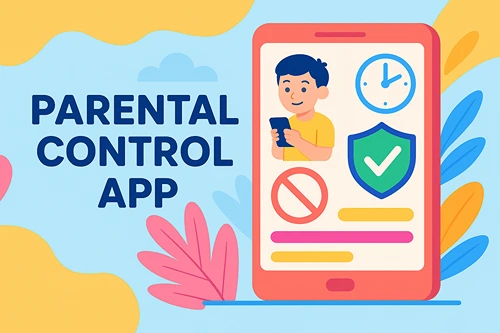Supporting Student Mental Well-Being in Online Education
Like most institutions and industries, the landscape of education has undergone a dramatic digital transformation. The rise of online learning has opened new doors for students, offering flexibility, accessibility, and innovative approaches to education.
However, as we embrace these digital advancements, it’s crucial to address an equally important aspect of student life: mental health and well-being.
At Ontario Virtual School, for example, they understand that the transition to online learning can present unique challenges for students. As educators and parents themselves, they have implemented strategies to support students effectively. However, supporting mental well-being in an increasingly isolated world is a cooperative endeavour that requires parental engagement. This article explores the intersection of online education and mental health, offering insights and practical approaches to ensure student well-being in the digital age.
Understanding the Challenges
The shift to online learning environments brings with it a set of unique challenges that can affect students’ mental health:
Social Isolation
One of the most significant concerns in online education is the potential for social isolation. The lack of face-to-face interactions with peers and teachers can lead to feelings of loneliness and disconnection.
Screen Time and Digital Fatigue
Increased screen time, often necessary for online learning, can contribute to digital fatigue, eye strain, and disrupted sleep patterns closer to bedtime.
Lack of Structure
Without the physical structure of a traditional school day, some students may struggle with time management and maintaining a healthy routine.
Blurred Boundaries
The line between school and home life can become blurred, making it difficult for students to “switch off” and relax.
The Importance of Mental Health in Education
Mental health is fundamental to a student’s ability to learn, grow, and thrive. Good mental health enables students to:
- Develop emotionally, intellectually, and socially
- Cope with challenges and setbacks
- Form and maintain positive relationships
- Make meaningful contributions to their communities
When mental health issues are left unaddressed, they can significantly impact academic performance, social interactions, and overall quality of life. In the context of online education, where students may have fewer in-person touchpoints with educators and peers, it’s even more critical to prioritize mental health support.
Strategies for Supporting Mental Health in Online Education – A Checklist
When considering various online high schools, aside from ensuring that a provider of virtual classes is certified by Ontario’s Ministry of Education, confirm that they support student mental well-being in the following ways.
1. Fostering a Sense of Community. Creating a strong sense of community is vital in combating feelings of isolation. Virtual schools can:
-
- Organize regular virtual meetups, study groups, and social events
- Encourage peer-to-peer interactions through online forums and collaborative projects
- Implement a mentorship program pairing older students with younger ones
2. Promoting Digital Wellness. Educating students about digital wellness can help mitigate the negative impacts of increased screen time:
-
- Teach students about the importance of taking regular breaks (e.g., the 20-20-20 rule: every 20 minutes, look at something 20 feet away for 20 seconds)
- Encourage the use of blue light filters and proper ergonomics
- Provide guidelines for creating a healthy sleep routine, including limiting screen time before bed
3. Implementing Structured Support Systems. Having clear support systems in place can help students feel more secure and connected:
-
- Assign each student a dedicated advisor or counsellor for regular check-ins
- Offer virtual office hours where students can drop in to speak with teachers or support staff
- Provide access to online counselling services or partnerships with mental health professionals
4. Teaching Stress Management and Coping Skills. Equipping students with tools to manage stress and anxiety is essential:
-
- Incorporate mindfulness and relaxation techniques into the curriculum
- Offer workshops on time management, goal-setting, and study skills
- Provide resources on coping strategies for common challenges in online learning
5. Encouraging Physical Activity and Outdoor Time. Physical well-being is closely linked to mental health:
-
- Integrate physical activity breaks into the virtual school day
- Assign outdoor activities or nature-based projects when possible
- Educate students and families about the importance of regular exercise and time in nature
6. Flexible Learning Approaches. Recognizing that different students have different needs can help reduce stress and anxiety:
-
- Offer a mix of synchronous and asynchronous learning options
- Provide flexibility in assignment deadlines when possible
- Allow students to choose from various formats for completing assignments (e.g., written, video, audio)
7. Enhancing Digital Literacy and Confidence. Building students’ confidence with technology can reduce anxiety related to online learning:
-
- Offer orientation sessions and ongoing tech support
- Create tutorials and guides for commonly used platforms and tools
- Celebrate students’ technological achievements and innovations
8. Prioritizing Work-Life Balance. Help students maintain a healthy balance between school and personal life:
-
- Encourage the creation of dedicated study spaces at home
- Teach strategies for “logging off” and transitioning out of school mode
- Model good work-life balance practices among staff and educators
9. Involving Parents and Guardians. Engaging families in supporting student mental health is necessary:
-
- Provide resources and workshops for parents on supporting their child’s mental health in an online learning environment
- Encourage open communication between the school, students, and families
- Offer guidance on creating a supportive home learning environment
10. Regular Assessment and Feedback. Continuously monitoring and adapting support strategies is essential:
-
- Conduct regular surveys to assess student well-being and gather feedback
- Establish a student advisory board to provide insights and suggestions
- Stay informed about the latest research and best practices in online education and mental health
Looking Ahead: The Future of Mental Health in Online Education
As online education continues to evolve, so too must our approaches to supporting student mental health. Future developments may include:
- Personalized Mental Health Curricula. Data analytics can be used to tailor mental health education and support to individual student needs.
- Enhanced Virtual Counseling. Leveraging advancements in telepresence technology to create more immersive and effective virtual counselling experiences.
- Biometric Feedback. Exploring the ethical use of wearable technology to monitor stress levels and provide real-time support.
In Conclusion
The intersection of online education and mental health presents both challenges and opportunities. By preparing students, prioritizing well-being, and implementing comprehensive support strategies, virtual schools can create environments where students not only learn effectively but also thrive emotionally and socially.
As we continue to navigate the digital age of education, let us remember that technology is a tool, not a replacement for human connection and support. By fostering a culture of openness, empathy, and proactive mental health support, we can ensure that online education becomes a pathway not just to academic success, but to holistic personal growth and well-being.






